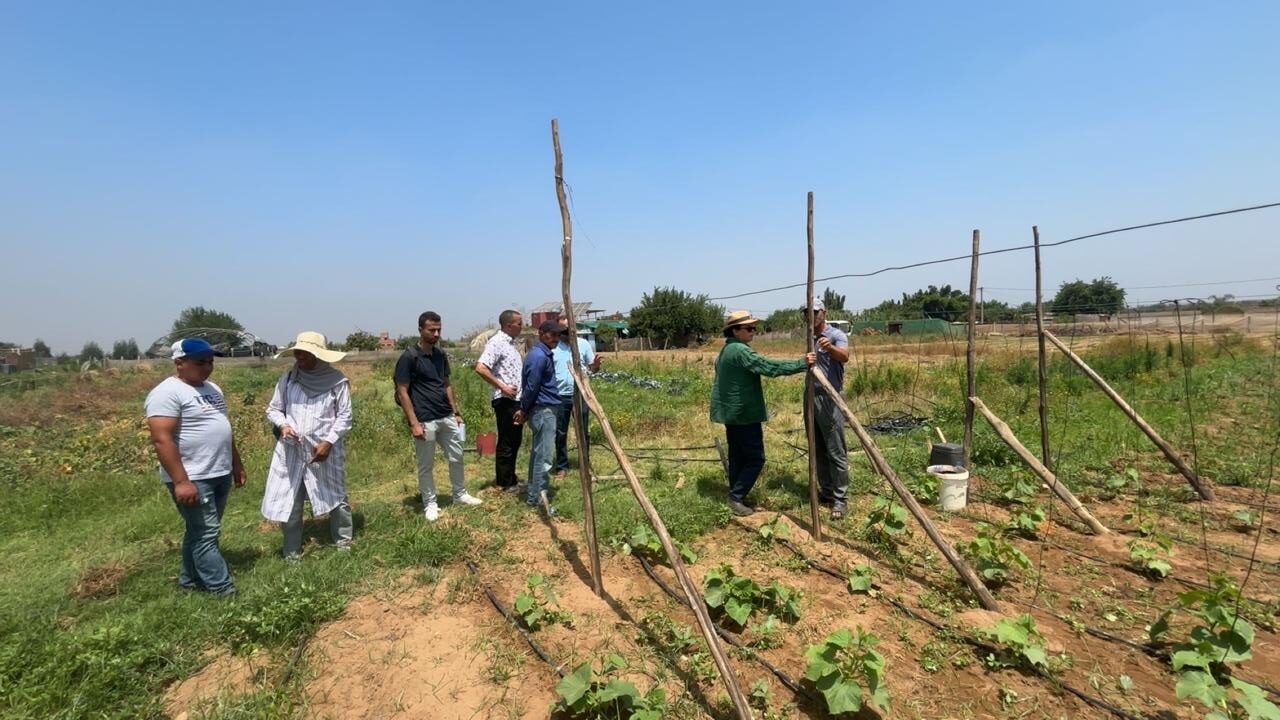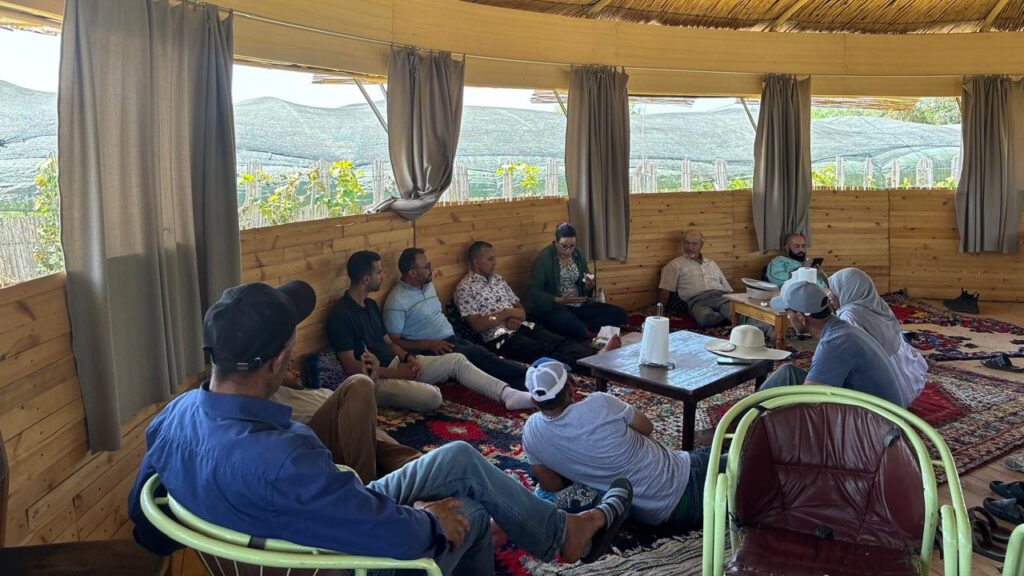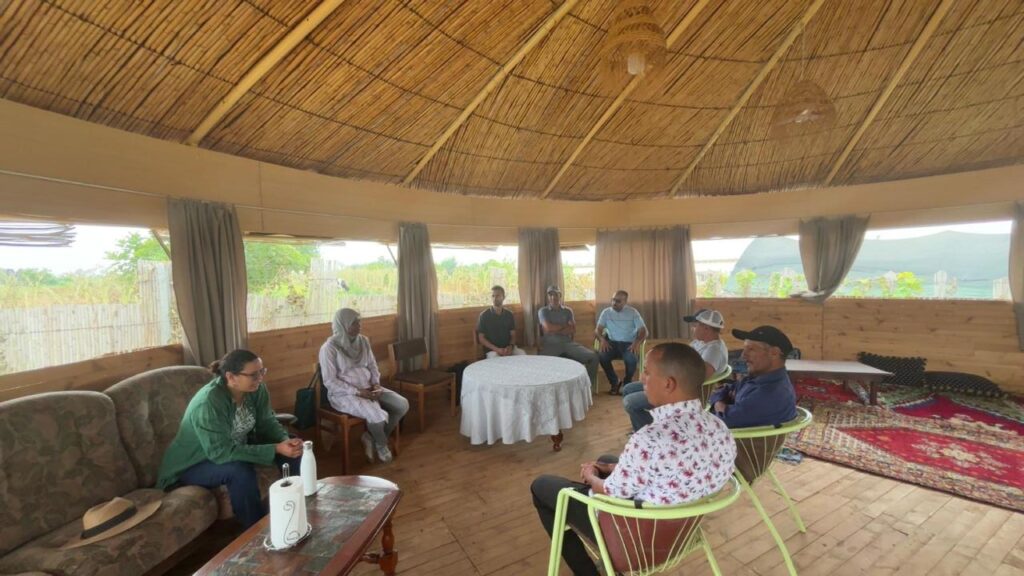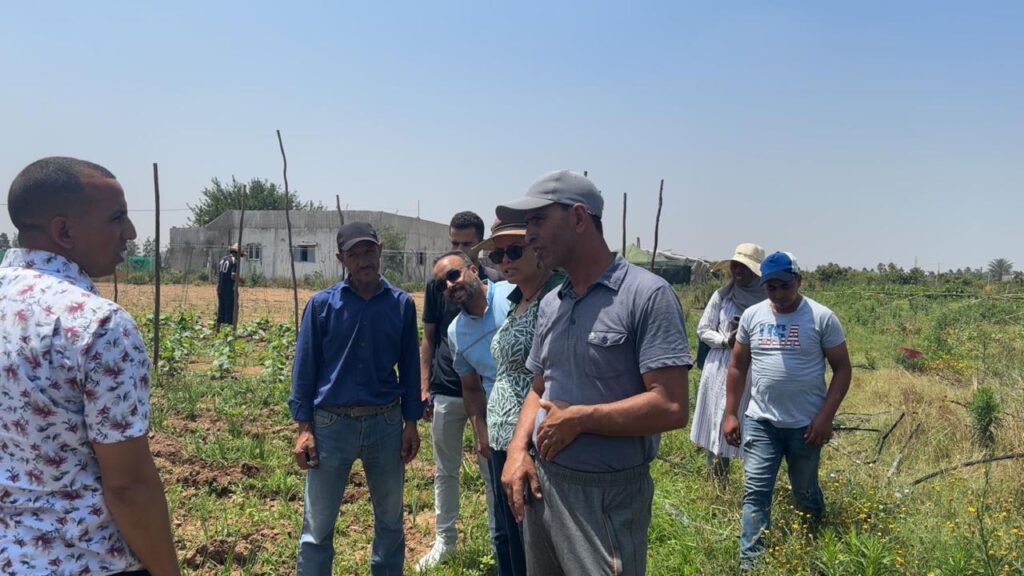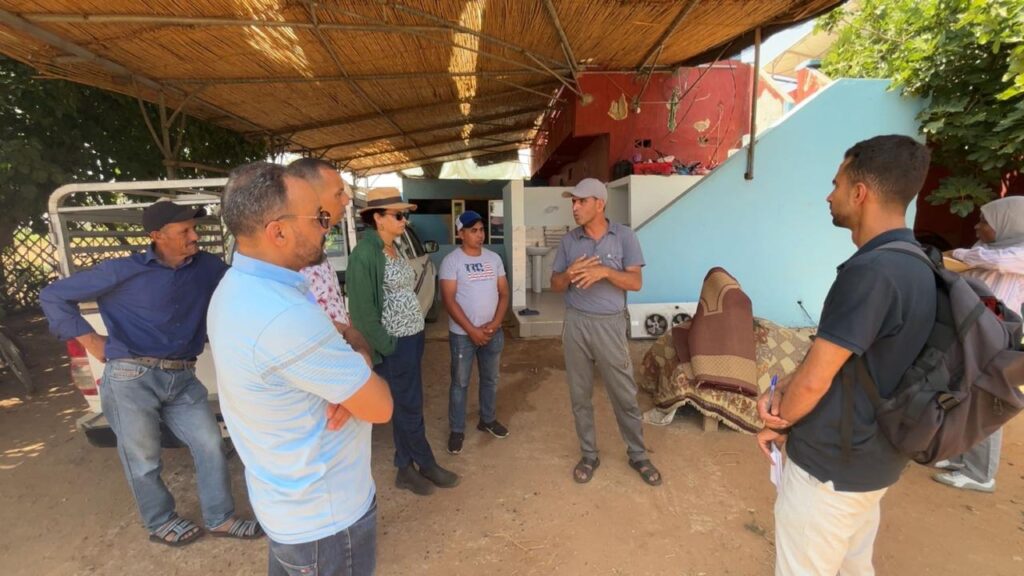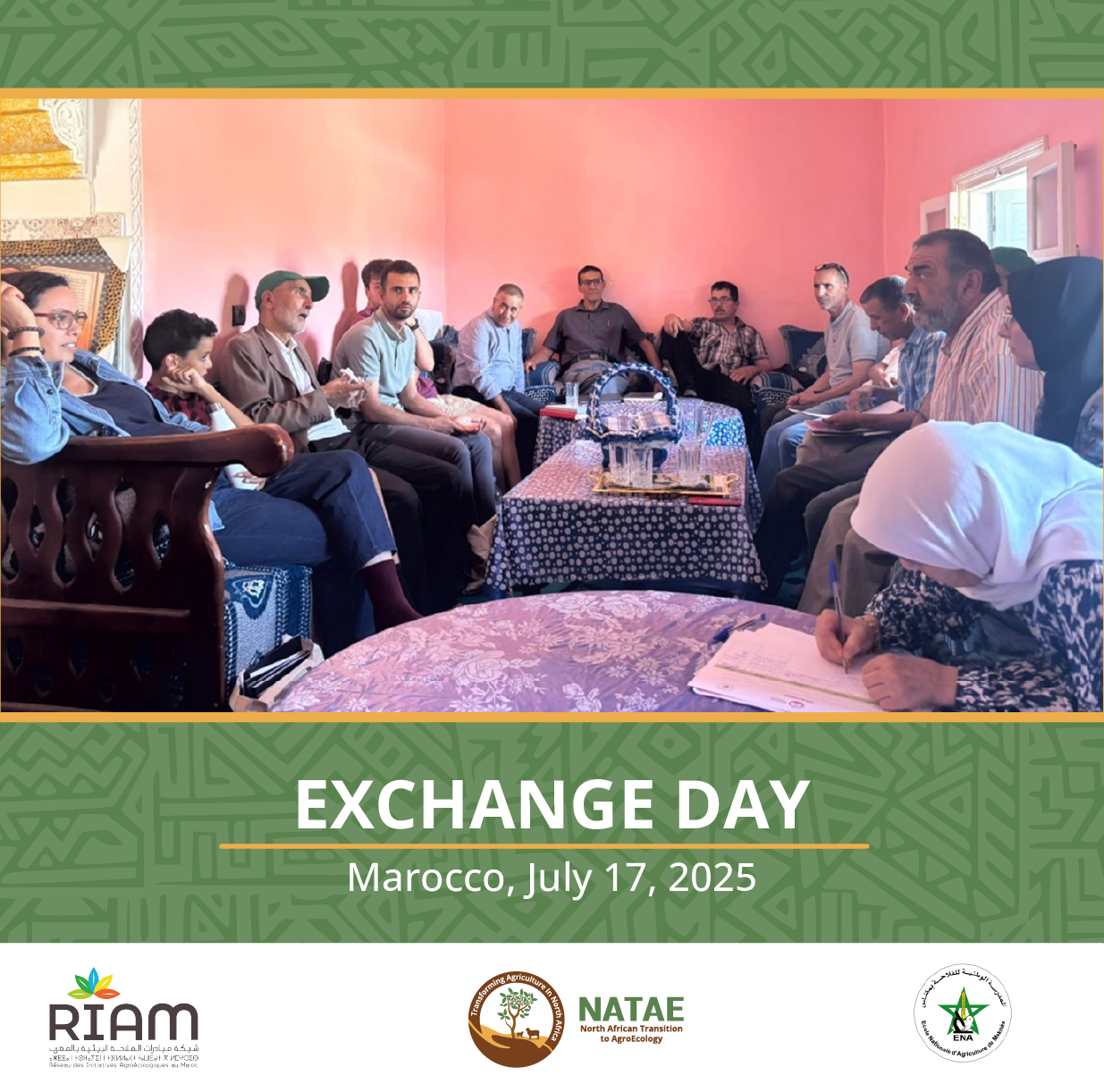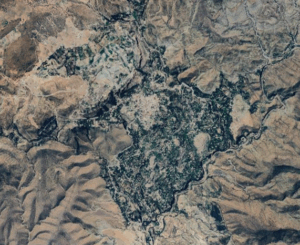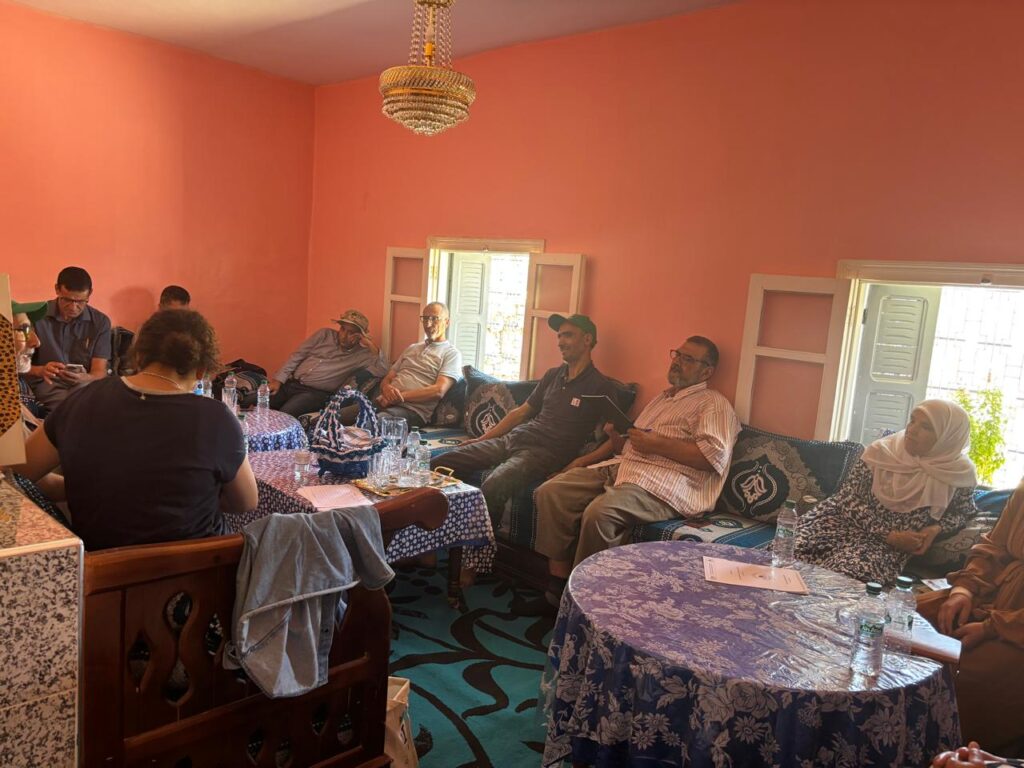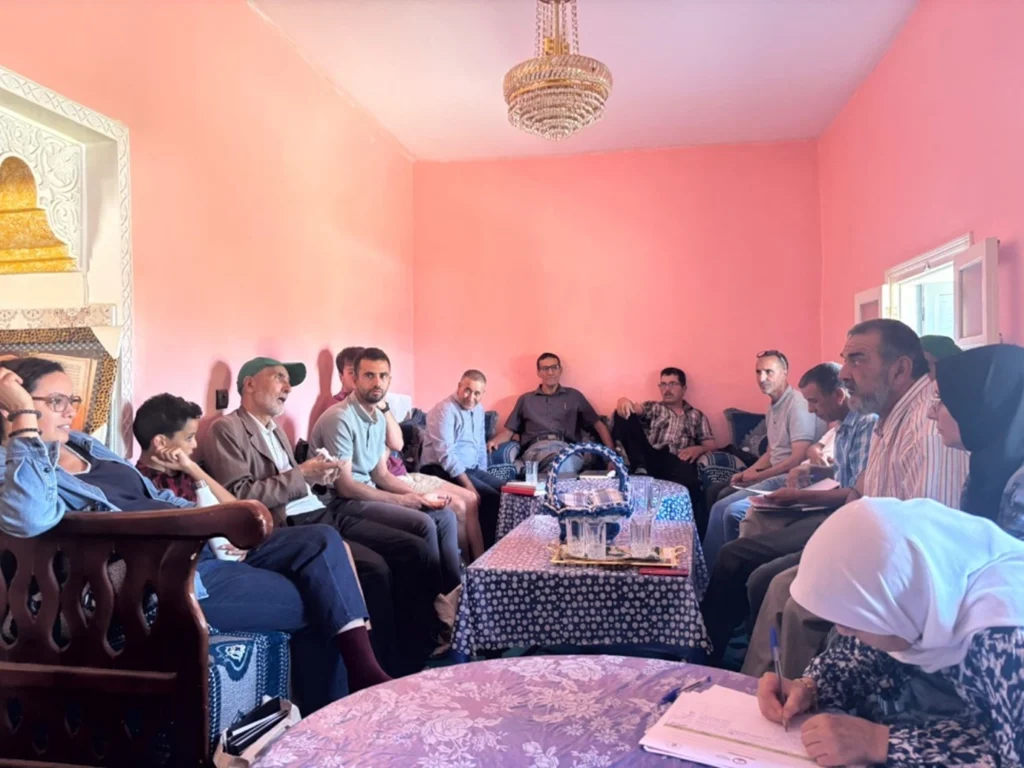Voyage d'étude - Living Lab Aït Otmane
Maroc, Rabat, 4 juillet 2025
1) Contexte et objectif :
Dans le cadre du projet NATAE, l'Ecole Nationale d'Agriculture de Meknès a organisé, en collaboration avec le Réseau des Initiatives Agroécologiques au Maroc, le 4 juillet 2025, un voyage d'étude à Rabat au profit des agriculteurs du Living Lab Aït Otmane. Cette initiative s'inscrit dans une démarche participative visant à renforcer les capacités des agriculteurs et à favoriser le transfert de connaissances en agroécologie. L'objectif principal de cette sortie était de favoriser l'échange d'expériences entre les participants et de leur permettre de découvrir des pratiques agroécologiques innovantes, notamment à travers des rencontres avec des experts, des agriculteurs pionniers et des visites de sites agricoles exemplaires. Ce voyage a également stimulé la réflexion collective sur les alternatives durables aux pratiques agricoles conventionnelles, en phase avec les défis climatiques et environnementaux actuels.
2. le lieu de la visite :
Ferme visitée : ferme biologique située à El Arejat Coordonnées GPS : 34°00'47.7″N, 6°38'48.2″W
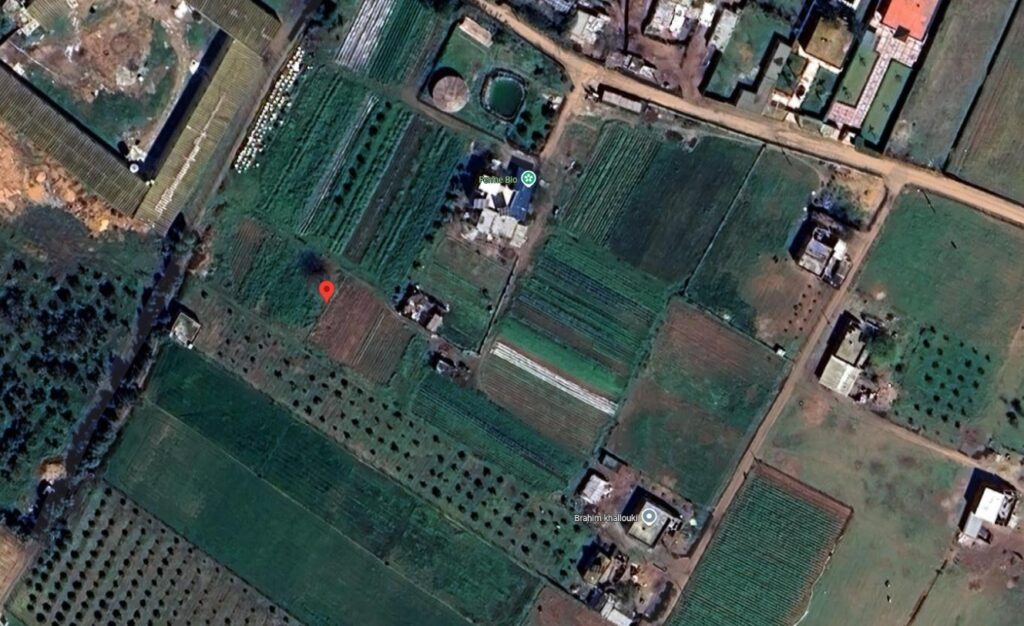
3. le programme d'activités
Activité 1 : Accueil et premiers échanges
La journée a débuté par une session d'accueil et de présentation, au cours de laquelle chaque participant a eu l'occasion de se présenter et d'expliquer son expérience agricole, favorisant ainsi un premier échange riche entre les agriculteurs du Living Lab d'Aït Otmane et les hôtes de la ferme visitée. Ces présentations ont permis de créer un climat de confiance, propice à l'échange de savoir-faire et au partage de pratiques agricoles. Cette première étape a jeté les bases d'un dialogue ouvert et constructif tout au long de la journée.
Activité 2 : Présentation de l'expérience agroécologique
- Histoire de la ferme
L'exploitation visitée représente un exemple concret de transition réussie vers l'agroécologie. L'adoption de pratiques agroécologiques a commencé en 2006, sur une surface modeste d'environ 1 000 m². Dès 2007, la production agricole a été lancée, marquant le début d'un système de culture basé sur des principes écologiques, y compris la fertilisation organique, les associations de cultures et l'intégration de l'élevage et de l'apiculture. La ferme a également commencé la commercialisation directe de ses produits, principalement dans le centre de Rabat, contribuant ainsi à la diffusion des produits issus de l'agriculture durable.
Échange sur les principaux défis
Un échange ouvert a été organisé entre les agriculteurs du Living Lab Aït Otmane et les responsables de la ferme d'accueil. Cet échange a mis en lumière plusieurs défis majeurs auxquels sont confrontés les agriculteurs engagés dans l'agroécologie :
Le manque de formation spécifique : De nombreux agriculteurs soulignent le manque de programmes adaptés à l'agroécologie, ce qui limite leur capacité à améliorer ou à diversifier leurs pratiques.
Difficultés d'accès au marché : la valorisation des produits agroécologiques reste un défi, notamment en raison du manque de canaux de distribution alternatifs et de la concurrence avec les produits conventionnels.
Besoin d'assistance technique : les producteurs expriment un besoin accru d'encadrement, notamment en matière de gestion de la fertilité des sols, de lutte écologique contre les ravageurs et d'organisation de la production.
Les participants ont ainsi l'occasion de partager leurs expériences, de s'identifier aux défis rencontrés et de réfléchir ensemble à des solutions durables adaptées au contexte local.
Activité 3 : Visite guidée de l'exploitation
La troisième activité de la journée consistait en une visite guidée détaillée de la ferme d'accueil, qui a donné aux participants l'occasion d'explorer une variété de pratiques agricoles agroécologiques appliquées sur le site. Cette visite a été un moment crucial pour voir de manière tangible la mise en œuvre de principes durables dans le domaine agricole.
Les principales pratiques observées sont les suivantes :
Agroécologie intégrée : l'exploitation applique une variété de techniques agricoles respectueuses de l'environnement et adaptées aux contextes locaux.
Agroforesterie : combinaison judicieuse d'arbres, de cultures et parfois de bétail sur une même parcelle, favorisant la biodiversité et la résilience des systèmes de production.
Permaculture : développement de terres agricoles selon les principes de durabilité, d'efficacité et d'interaction positive entre les éléments du système.
Rotation et association des cultures : mise en œuvre d'une rotation et d'une association régulières des cultures sur des bandes de 6 à 7 mètres, afin de prévenir les maladies, d'améliorer la fertilité du sol et d'optimiser l'espace.
Maraîchage varié : l'exploitation développe une grande diversité culturelle, notamment en matière de légumes de saison.
L'apiculture : La présence de ruches favorise la pollinisation naturelle et renforce les écosystèmes environnants.
Élevage : intégré au système de production, l'élevage contribue à la fertilisation des sols.
Fertilisation organique : utilisation du fumier produit sur place, assurant un enrichissement naturel du sol.
Désherbage manuel : utilisation de méthodes mécaniques et manuelles pour limiter l'utilisation de produits chimiques.
Système d'irrigation durable : utilisation d'un système d'irrigation au goutte-à-goutte alimenté par une pompe solaire, avec stockage de l'eau dans un bassin, garantissant une gestion efficace et économique de la ressource.
La ferme vend directement à domicile, avec une clientèle régulière de 40 à 60 familles, ce qui permet de renforcer le lien producteur-consommateur, de réduire les intermédiaires et de promouvoir les produits frais et locaux.
Activité 4 : Discussion sur le système de certification SPG - RIAM
- Présentation du système participatif de garantie (SPG) - RIAM
- Exigences du SPG
- Avantages du SPG pour les petits producteurs
- Procédure d'obtention de la certification SPG
